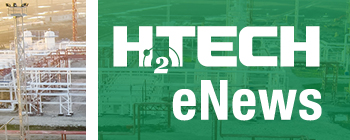News
From base hits to bold moves: Global leaders chart H2’s path forward
At the World Hydrogen 2025 Summit in Rotterdam, session 13—“What’s on the Hydrogen Horizon? Outlook for the Future of Hydrogen”—brought together a globally diverse panel of industry leaders to reflect on recent progress and the persistent barriers in the hydrogen (H2) economy. Moderated by Monica Swanson of the Port of Rotterdam, the conversation underscored the varying regional strategies shaping H2’s trajectory.
Karen Hamberg of Deloitte Canada highlighted Canada’s dual focus: building export corridors while developing domestic heavy-duty transport applications, especially in British Columbia and Alberta. “We’re assembling full value chain consortia—from production to fleets—to accelerate real-world H2 use in Class A trucking,” she explained.
From India, Arunabha Sinha, EVP at ACME Group, discussed the foundational role of ultra-low-cost electricity in making H2 viable. With a nationwide grid delivering electrons at $35/MWh, India is scaling green H2 for domestic sectors and exports, aided by targeted government incentives and a mature ammonia workforce.
Dr. Jehan Kanga, CEO of Australia’s Rux Energy, emphasized the rise of small-scale, fast-moving H2 projects in rural Australia. “Family-run construction firms are pioneering low-volume offtake, de-risking the sector,” she said, noting how these projects are enabling bigger players like Toll Holdings to piggyback on early infrastructure. She also advocated for packaged H2 logistics to fill near-term gaps in maritime distribution.
On infrastructure, Johan Douma of Gasunie championed “oversizing” shared pipelines and terminals to ensure early projects don’t get bottlenecked. He pointed to recent Dutch mandates for H2 offtake as small, but necessary steps to unlock final investment decisions (FIDs) and kickstart a self-sustaining market.
Closing the session, Dr. Ralf Schaaf of First Ammonia challenged the industry to not only reduce costs but redesign the regulatory structure. “Electrolyzer costs are only a fraction of the total. It’s the over-engineered rules—like hourly renewable matching—that inflate CAPEX and stall progress.”
The session painted a realistic yet hopeful picture: a H2 economy advancing not through silver bullets, but through incremental action, shared infrastructure, and policy alignment. Whether through Australia’s rural agility, India’s grid-enabled scale, or Canada’s fleet-focused pilots, the message was clear—momentum is building, and H2’s future is being shaped one base hit at a time.
Story by: Jim Watkins, European Business Development Director and Podcast Host

